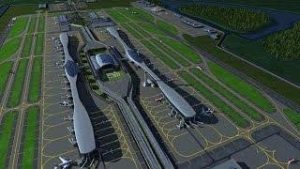As India surges toward becoming the world’s third-largest economy, its urban landscapes are transforming rapidly. Skyscrapers, sprawling metro networks, and modern infrastructure dominate the skylines. But some age-old civic issues—like stray cattle, littering, water leakages, and unauthorized constructions—continue to hamper urban life. The game-changer? Artificial Intelligence (AI).
From detecting stray cattle on roads to fixing leaking pipelines and tracking unregistered buildings, cities across India are embracing AI in their municipal governance to build smarter, cleaner, and more efficient urban spaces.
How Is Surat Tackling Stray Cattle With AI?
The streets of Surat, like many Indian cities, have long struggled with stray cattle. They not only slow traffic but also pose serious accident risks. In a move that blends tradition with technology, the Surat Municipal Corporation (SMC) has deployed an AI system developed by NIT Surat.
Key Features:
- Live Video Feed Monitoring: Cameras installed at major traffic junctions detect cattle using an AI algorithm.
- Smart Alerting System: Alerts are only generated when cattle are unaccompanied by herders. These alerts include timestamps and geolocations.
- Rapid Response: Once notified, ground teams impound the animals and initiate action.
This effort is part of a broader policy under Gujarat’s anti-stray cattle law passed in 2022. SMC has also implemented RFID tagging for cattle and levied fines on repeat offenders, recovering ₹18.4 lakh through 1,545 detections so far.
Can AI Help Fight Littering and Spitting?
Yes—and Surat is proving that too.
Using the same AI surveillance infrastructure:
- 35,382 incidents of littering and 12,120 cases of public spitting have been identified.
- Vehicle numbers are detected using Automatic Number Plate Recognition (ANPR) technology.
- Fines collected: ₹18.4 lakh for littering and ₹7.19 lakh for spitting.
This has contributed significantly to Surat’s high performance in the Swachh Survekshan cleanliness rankings.
How Is Pune Using AI to Cut Water Wastage?
India’s cities lose up to 50% of water in supply due to leaks and unauthorized usage. But Pune is rewriting that narrative.
What’s Happening in Pune?
- A trial in the Panchawati zone used AI-enabled digital twin technology to map and monitor the 10km water network.
- This system identifies leakages and illegal connections in real time.
- As a result, non-revenue water (NRW) dropped from 50% to 25%, with a goal of hitting 20%.
- Based on its success, this model will now expand to 15 other city zones.
The digital twin builds a real-time virtual replica of the water network using sensor data, AI/ML algorithms, and consumption patterns.
Can AI Help Identify Illegal Constructions?
Pune is also deploying GIS-based AI models to detect unauthorized buildings by comparing current land use with property tax records. This move helps the city plug revenue gaps and enforce zoning laws more effectively.
What Smart AI Solutions Are Emerging in Aurangabad?
In Chhatrapati Sambhajinagar (formerly Aurangabad), citizens can now raise municipal queries using an AI-powered chatbot that speaks both Marathi and English.
Key Highlights:
- Covers modules for birth/death certificates, complaints, taxes, and water bills.
- Complaints receive SMS acknowledgments and are automatically forwarded to the relevant department.
- If unresolved in two weeks, they are escalated directly to the city commissioner.
This makes grievance redressal timely, transparent, and accountable.
How Is Jabalpur Using Drones and AI for Taxation?
In Jabalpur, authorities have mapped the entire 264 sq km city using 3D models and aerial drone imagery. This imagery is compared every five years to detect unauthorized property expansions.
In the latest audit (March 2024):
- 20% of properties had expanded illegally.
- This led to an additional ₹30 crore in property tax collection.
What Role Is AI Playing in Public Safety and Traffic Management?
Under the Smart City Mission and the Safe City Project (supported by the Nirbhaya Fund), AI is transforming urban safety:
Key Use Cases:
- Integrated Traffic Management Systems (ITMS): Detect red light violations, helmetless riders, triple riding, and wrong-way driving via AI and ANPR.
- Facial Recognition Cameras: Flag suspicious individuals in real time.
- Delhi’s Upcoming AI Infrastructure: By October, 3,500 new AI cameras and 200 gunshot detection units will be installed in the capital.
However, challenges remain. The tragic death of DU student Sneha Debnath highlighted gaps in camera maintenance, with many systems non-functional near the Signature Bridge where the incident occurred.
What Is the Future of AI in Indian Urban Governance?
- Experts believe AI’s biggest potential lies in predictive analytics.
According to Debolina Kundu, Director at NIUA:
- AI can forecast disasters and enhance urban services.
- Under the CITIIS 2.0 initiative, 21 cities are setting up climate observatories.
- These observatories integrate live pollution/weather data with historical trends to predict localized weather events and climate risks.
The smart city command centres have immense data pools waiting to be tapped for further AI applications—especially in sustainability, mobility, and housing.
Conclusion: India’s Smart Cities Are Getting Smarter
India’s civic evolution isn’t just about building infrastructure—it’s about embedding intelligence into it. From detecting cattle to preventing water loss, artificial intelligence is enabling a new era of proactive, data-driven governance. While challenges remain in implementation and maintenance, one thing is clear: AI is no longer a luxury—it’s a necessity for India’s urban future.
Also Read:- How Akshay Kumar Made ₹110 Crore by Selling His Flats and Offices in Mumbai
As India surges toward becoming the world’s third-largest economy, its urban landscapes are transforming rapidly. Skyscrapers, sprawling metro networks, and modern infrastructure dominate the skylines. But some age-old civic issues—like stray cattle, littering, water leakages, and unauthorized constructions—continue to hamper urban life. The game-changer? Artificial Intelligence (AI).
From detecting stray cattle on roads to fixing leaking pipelines and tracking unregistered buildings, cities across India are embracing AI in their municipal governance to build smarter, cleaner, and more efficient urban spaces.
How Is Surat Tackling Stray Cattle With AI?
The streets of Surat, like many Indian cities, have long struggled with stray cattle. They not only slow traffic but also pose serious accident risks. In a move that blends tradition with technology, the Surat Municipal Corporation (SMC) has deployed an AI system developed by NIT Surat.
Key Features:
- Live Video Feed Monitoring: Cameras installed at major traffic junctions detect cattle using an AI algorithm.
- Smart Alerting System: Alerts are only generated when cattle are unaccompanied by herders. These alerts include timestamps and geolocations.
- Rapid Response: Once notified, ground teams impound the animals and initiate action.
This effort is part of a broader policy under Gujarat’s anti-stray cattle law passed in 2022. SMC has also implemented RFID tagging for cattle and levied fines on repeat offenders, recovering ₹18.4 lakh through 1,545 detections so far.
Can AI Help Fight Littering and Spitting?
Yes—and Surat is proving that too.
Using the same AI surveillance infrastructure:
- 35,382 incidents of littering and 12,120 cases of public spitting have been identified.
- Vehicle numbers are detected using Automatic Number Plate Recognition (ANPR) technology.
- Fines collected: ₹18.4 lakh for littering and ₹7.19 lakh for spitting.
This has contributed significantly to Surat’s high performance in the Swachh Survekshan cleanliness rankings.
How Is Pune Using AI to Cut Water Wastage?
India’s cities lose up to 50% of water in supply due to leaks and unauthorized usage. But Pune is rewriting that narrative.
What’s Happening in Pune?
- A trial in the Panchawati zone used AI-enabled digital twin technology to map and monitor the 10km water network.
- This system identifies leakages and illegal connections in real time.
- As a result, non-revenue water (NRW) dropped from 50% to 25%, with a goal of hitting 20%.
- Based on its success, this model will now expand to 15 other city zones.
The digital twin builds a real-time virtual replica of the water network using sensor data, AI/ML algorithms, and consumption patterns.
Can AI Help Identify Illegal Constructions?
Pune is also deploying GIS-based AI models to detect unauthorized buildings by comparing current land use with property tax records. This move helps the city plug revenue gaps and enforce zoning laws more effectively.
What Smart AI Solutions Are Emerging in Aurangabad?
In Chhatrapati Sambhajinagar (formerly Aurangabad), citizens can now raise municipal queries using an AI-powered chatbot that speaks both Marathi and English.
Key Highlights:
- Covers modules for birth/death certificates, complaints, taxes, and water bills.
- Complaints receive SMS acknowledgments and are automatically forwarded to the relevant department.
- If unresolved in two weeks, they are escalated directly to the city commissioner.
This makes grievance redressal timely, transparent, and accountable.
How Is Jabalpur Using Drones and AI for Taxation?
In Jabalpur, authorities have mapped the entire 264 sq km city using 3D models and aerial drone imagery. This imagery is compared every five years to detect unauthorized property expansions.
In the latest audit (March 2024):
- 20% of properties had expanded illegally.
- This led to an additional ₹30 crore in property tax collection.
What Role Is AI Playing in Public Safety and Traffic Management?
Under the Smart City Mission and the Safe City Project (supported by the Nirbhaya Fund), AI is transforming urban safety:
Key Use Cases:
- Integrated Traffic Management Systems (ITMS): Detect red light violations, helmetless riders, triple riding, and wrong-way driving via AI and ANPR.
- Facial Recognition Cameras: Flag suspicious individuals in real time.
- Delhi’s Upcoming AI Infrastructure: By October, 3,500 new AI cameras and 200 gunshot detection units will be installed in the capital.
However, challenges remain. The tragic death of DU student Sneha Debnath highlighted gaps in camera maintenance, with many systems non-functional near the Signature Bridge where the incident occurred.
What Is the Future of AI in Indian Urban Governance?
- Experts believe AI’s biggest potential lies in predictive analytics.
According to Debolina Kundu, Director at NIUA:
- AI can forecast disasters and enhance urban services.
- Under the CITIIS 2.0 initiative, 21 cities are setting up climate observatories.
- These observatories integrate live pollution/weather data with historical trends to predict localized weather events and climate risks.
The smart city command centres have immense data pools waiting to be tapped for further AI applications—especially in sustainability, mobility, and housing.
Conclusion: India’s Smart Cities Are Getting Smarter
India’s civic evolution isn’t just about building infrastructure—it’s about embedding intelligence into it. From detecting cattle to preventing water loss, artificial intelligence is enabling a new era of proactive, data-driven governance. While challenges remain in implementation and maintenance, one thing is clear: AI is no longer a luxury—it’s a necessity for India’s urban future.
Also Read:- How Akshay Kumar Made ₹110 Crore by Selling His Flats and Offices in Mumbai







